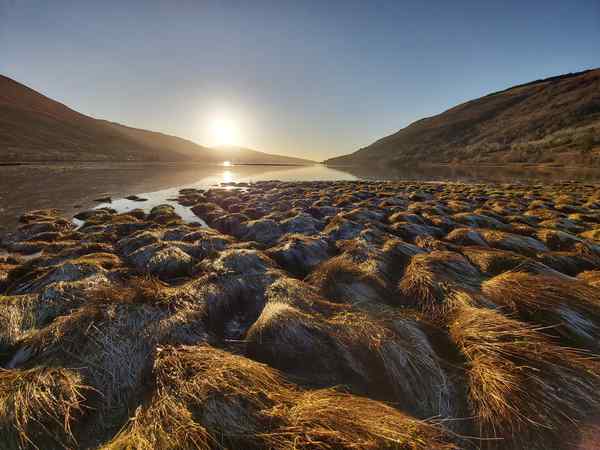Images of climate innovation
Blue carbon: Nature-based solution
Coastal vegetated (blue carbon) habitats – like this saltmarsh near the head of Loch Fyne, Argyll, Scotland – capture and store large quantities of carbon. Our research assesses how this carbon storage potential (both above and below ground) can help deliver new policy opportunities to protect, restore and even create blue carbon habitats – all of which will help deliver climate mitigation and adaptation solutions. Nature-based solutions for climate change, people and biodiversity already exist and invite us to rethink our relationship with nature.

The Earth's climate is warming rapidly and sea levels are rising around the globe, flooding and eroding our coasts. One important type of coastal environment that is at risk is saltmarshes. These are vegetated tidal flats that are tucked away in sheltered embayments, where there is a gradual transition between the land and sea. They also occur in more exposed locations where they form a natural defence against the encroaching sea. Saltmarshes are also valuable because the plants that grow on them take up carbon from the atmosphere and store it in their soils these so-called blue carbon habitats are among the planet's most effective carbon sinks and stores. Because carbon dioxide in the atmosphere is important in controlling the Earth's temperature, the take-up and storing of carbon in the ground can help reduce climate change.
Our work seeks to improve the understanding of this blue carbon habitat, quantify the carbon stores in saltmarsh soils, and sheds new light on the rates at which carbon is buried. We want to highlight the blue carbon value of these habitats not only for their role in tackling climate change and providing natural coastal flood protection but also to highlight their vulnerability - for example, poorly managed habitats can release greenhouse gases back to the atmosphere from soils that have taken millennia to accumulate their carbon stocks, adding to climate change pressures. We want to use our research on saltmarsh habitats, which are widespread around our coastlines, to highlight the evidence that we already have abundant nature-based solutions for climate change, people, and biodiversity.
Entrant: William Austin , University of St Andrews
Copyright: William Austin